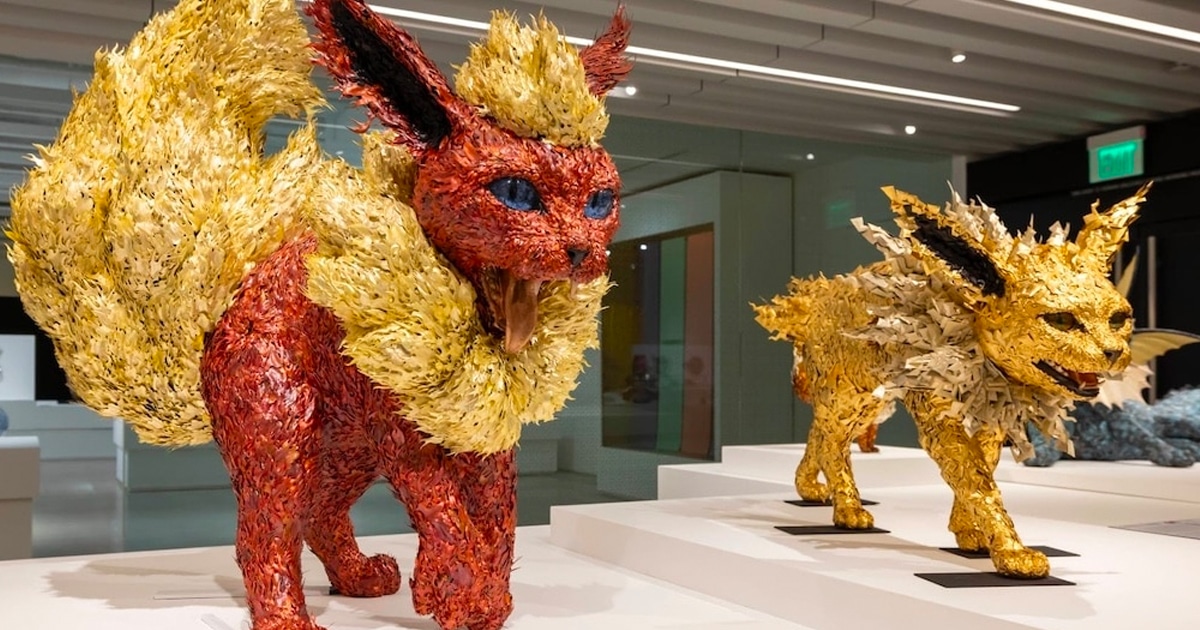offering
2016
114.3 x 86.36 cm
Gyempo Wangchuk
The various distinct but connected lineages of Himalayan painting remain thriving languages employed by artists from across the region to express their unique perspective in our shared contemporary world. In Bhutan in particular, this language is prevalent and its maintenance is seen through the political prism of preserving Bhutan’s identity in the global world. That being said, o ffering by Gyempo Wangchuk presented an attempt to bring a critical dimension within the traditional Himalayan forms of expression. The artist achieves this not through a facile postmodern device of associating discording languages, but through employing the means available within that painterly tradition to bring a forceful process of questioning. The stylized painting is composed of natural pigments on cotton canvas, and combines both figurative elements and abstract patterns. The work is thus composed following the general traditional aesthetic and rules of presenting sacred offerings to the gods. But rather than presenting the traditionally pure items deemed acceptable in this context, Wangchuk introduces mundane and even impure offerings, humanising the process and critiquing the broader ideology of purity dominating Bhutanese religion and society.
Gyempo Wangchuk is a unique artist in the Bhutanese, and wider Himalayan context because he combines his classical training in traditional Bhutanese painting with contemporary concepts and aesthetics, as well as discreet but potent expressions of dissidence. Bhutan is the last surviving Himalayan kingdom and until recently one of the most isolated countries in the world. While generally praised for its official policy regarding conservation of traditional identities, the protection of natural resources, and its much hyped concept of Gross National Happiness, Bhutan is also known for its penchant for uniformity around its monarchical and religious system, an ideology of purity that lead in the past decades to the expulsion of over a third of its ethnic minority population, one of the largest and less acknowledged acts of ethnic cleansing in the world. The country’s art scene is very much rooted in traditional Himalayan painting, but within this language, Gyempo Wangchuk is a pioneering figure, who brings critique and a plurality of perspectives to the artistic conversation.
Colors:
Related works sharing similar palette

© » ART CENTRON
Getting Creative: Beginner Tips for Learning Guitar Home » Getting Creative: Beginner Tips for Learning Guitar LIFESTYLE Nov 13, 2023 Ξ Leave a comment Getting Creative: Beginner Tips for Learning Guitar posted by Kelly Schoessling Learning to play an instrument takes a lifetime of effort, no matter what type of music you’re interested in...

© » ARTS EQUATOR
សេរីភាពសិល្បៈនៅកម្ពុជា ៖ នៅពេលដែលការការពារតាមផ្លូវច្បាប់មិនគ្រប់គ្រាន់ | ArtsEquator Skip to content នៅខែកញ្ញា ឆ្នាំ២០២០ អាជ្ញាធរកម្ពុជាបានចាប់ខ្លួនអ្នកចម្រៀងរ៉ែបវ័យក្មេងពីររូប គឺ គា សុគន្ធ និងឡុង ពុទ្ធារ៉ា ទាក់ទងទៅនឹងពាក្យពេចន៍រំលេចនៅក្នុងបទចម្រៀង ដីខ្មែរ របស់ពួកគេ ដែលចេញកាលពីខែមេសា ឆ្នាំ២០២០។ បទចម្រៀងនេះបានទាក់ទាញឱ្យមានការទស្សនារហូតដល់ជាង ២,២លានលើក អំឡុងពេល៥ខែបន្ទាប់ពីការចេញផ្សាយ។ បទ ដីខ្មែរ នេះជំរុញឱ្យយុវជនខ្មែរទាំងឡាយក្រោកប្រឆាំងនឹងការគាបសង្កត់ អំពើពុករលួយ បោះបង់ចោលគ្រឿងស្រវឹង ហើយយកចិត្តទុកដាក់លើបញ្ហាទឹកដី។ នៅក្នុងបទចម្រៀងនេះ សុគន្ធរ៉ែបថា៖ « ខ្ញុំចាប់កំណើតកើតនៅលើដីកម្សត់ មានបេះដូងអព្យាក្រឹត ប្រឆាំងជាមួយនឹងជនក្បត់ វ៉ៃយកកេរដំណែល ក្រវែលអ្នកគាបសង្កត់ ជួយជាតិតាមសំឡេង ឱ្យគេឮតាមបទ។ ខ្ញុំអ្នកសៀមរាបរស់នៅលើដីប្រាសាទ មានឈាមវរ្ម័នក្លាហានមិនបាក់ស្បាត ឈរតំណាងទឹក តំណាងដី តំណាងសាសន៍ លើកទង់ជាតិកម្ពុជា ស្មើមេឃ ស្មើអាកាស។ » ពាក្យពេចន៍របស់សុគន្ធ គឺពោរពេញទៅដោយមនោសញ្ចេតនា ជាតិនិយម ជាពិសេសពេលដែលសិល្បកររូបនេះរម្លឹកដល់អ្នកស្ដាប់ថា ៖ « យើងបើអស់ដីគ្មានអ្វីនៅទៀតទេ… សាសន៍មួយចំនួនកំពុងតែឈ្លានពាន ពេលដែលបាក់សាមគ្គីគេនឹងមកទន្ទ្រាន… » បើទោះបីជាបទចម្រៀងទាំងមូលមិនលើកយកពាក្យ «វៀតណាម» មកពណ៌នាក៏ដោយចុះ ក៏បញ្ហាទឹកដីដែលបានរំលេចនៅក្នុងចម្រៀងមួយបទ នេះធ្វើឱ្យអ្នកស្ដាប់យល់បានថា ជាការសំដៅទៅរកបញ្ហាព្រំដែនដ៏រស៊ើបមួយជាមួយនឹងប្រទេសវៀតណាម ទៅនឹង ការចោទប្រកាន់ ជាយូរយារណាស់មកហើយថា រដ្ឋាភិបាលកាន់អំណាច គេចពីទំនួលខុសត្រូវរបស់ខ្លួនចំពោះរឿងបូរណភាពទឹកដីកម្ពុជា។ ឆ្លើយតបនឹងបណ្ដឹងធ្វើឡើងដោយក្រសួងវប្បធម៌ និងវិចិត្រសិល្បៈ នៅក្នុងខែធ្នូ ឆ្នាំដដែលនោះអង្គជំនុំជម្រះសាលាដំបូងនៃខេត្តសៀមរាបបានចេញសេចក្ដីសម្រេចថា អ្នកចម្រៀងទាំងពីររូបមានទោសផ្អែកតាមមាត្រា៤៩៥ នៃក្រមព្រហ្មទណ្ឌកម្ពុជា ពីបទ « ញុះញង់ឱ្យប្រព្រឹត្តបទឧក្រិដ្ឋ » ។ នៅកម្ពុជា បទចោទប្រកាន់ពីការញុះញង់ និងបរិហារកេរ្តិ៍តែងតែត្រូវធ្វើឡើងដោយតុលាការទៅលើអ្នក នយោបាយ សកម្មជន និងបុគ្គលមួយចំនួនដែលត្រូវបានមើលឃើញថាជាអ្នករិះគន់រដ្ឋាភិបាល។¹ ម្យ៉ាងវិញទៀត ការផ្តន្ទាទោសទៅលើសុគន្ធ និងពុទ្ធារ៉ាអាចចាត់ទុកបានថាជាការអនុវត្តច្បាប់ទៅតាម «ក្រមសីលធម៌នៃអ្នកសិល្បៈ» ឆ្នាំ២០១៦ របស់ក្រសួងវប្បធម៌និងវិចិត្រសិល្បៈ ។ ផ្នែកទី២ ប្រការ៤ កថាខណ្ឌទី៩ នៃក្រមសីលធម៌នេះចែងថា អ្នកសិល្បៈទាំងអស់ « ត្រូវចៀសវាងឱ្យបាននូវប្រឌិតញាណ ការសម្ដែងដែលមានលក្ខណៈអុជអាល បំបែកបំបាក់ ប្រកាន់ពូជសាសន៍ ពណ៌សម្បុរ និងជំនឿសាសនា » ។ ក្រមនេះក៏ពិពណ៌នាផងដែរអំពីការពិន័យចំពោះការមិនគោរពតាម ឬការបំពានបទប្បញ្ញត្តិផ្សេងៗ ហើយការពិន័យ គឺមានពីរបែបទៅតាមទម្ងន់នៃទោស ៖ « ណែនាំ ឬស្ដីបន្ទោសដោយផ្ទាល់មាត់ និង/ឬ ព្រមានជាលាយលក្ខណ៍អក្សរផ្សព្វផ្សាយជាសាធារណៈ » និង/ឬ « ផ្អាកមិនឱ្យ [អ្នកសិល្បៈ]ធ្វើសកម្មភាពទាក់ទងនឹងវិស័យសិល្បៈវប្បធម៌ក្នុងរយៈពេលណាមួយស្របតាមកំហុសឆ្គងនៃអ្នកសិល្បៈនោះបានប្រព្រឹត្ត » ។ ខណៈដែលការដាក់ទោសទៅលើសុគន្ធ និងពុទ្ធារ៉ា គួរតែជាការដាក់ពិន័យកំណត់ដោយក្រមសីលធម៌នៃអ្នកសិល្បៈឆ្នាំ២០១៦ រដ្ឋាភិបាលកម្ពុជាបែរជាជ្រើសប្រើបទប្បញ្ញត្តិពីក្រមព្រហ្មទណ្ឌសម្រាប់ទម្ងន់ទោសនេះទៅវិញ។ ដូចដែលអ្នកកាសែត Sebastian Strangio បានកត់សម្គាល់ «ការផ្តន្ទាទោសអ្នកចម្រៀងរ៉ែបទាំងពីររូបនេះគ្រាន់តែជារលកថ្មីៗនៃការចាប់ខ្លួនសកម្មជន និងអ្នកប្រឆាំងដែលមានចំនួនកាន់តែច្រើនឡើងចាប់តាំងពីការចាប់ខ្លួនលោក រ៉ុង ឈុន មេសហជីពដ៏ល្បី កាលពីខែកក្កដា បន្ទាប់ពីលោកបានចោទប្រកាន់រដ្ឋាភិបាលអំពីការប្រគល់ដីឱ្យទៅប្រទេសវៀតណាម»។ ទោះជាយ៉ាងណាក្តី ការផ្តន្ទាទោសក្រោមមាត្រា៤៩៥នៃក្រមព្រហ្មទណ្ឌ គឺត្រូវមានធាតុនៃ « ការញុះញង់ដោយផ្ទាល់ឱ្យប្រព្រឹត្តបទឧក្រិដ្ឋ ឬរំខានដល់សន្តិសុខសង្គម » តាមរយៈការប្រើសម្ដី សំណេរ រូបថត ឬសោតទស្សន៍ណាមួយផ្សព្វផ្សាយដល់សាធារណជន។ ក្នុងករណីអ្នកចម្រៀងរ៉ែបទាំងពីរ ហាក់ដូចជាចូលក្នុងចំណុចទី២ គឺការផ្សព្វផ្សាយតន្ត្រីដល់សាធារណជន ប៉ុន្តែ មិន ច្បាស់ ថា តើ បទភ្លេងឬទំនុកច្រៀង របស់ ពួកគេ ជាការញុះញង់ដោយផ្ទាល់ ឱ្យ ប្រព្រឹត្ត បទល្មើស យ៉ាងដូចម្ដេច ឬថាតើពួកគេរំខានដល់សន្តិសុខជាតិយ៉ាងដូចម្ដេចនោះឡើយ។ នៅក្នុងសវនាការ ពុទ្ធារ៉ាសុខចិត្តបង្ហាញនូវវិប្បដិសារីចំពោះទង្វើរបស់ខ្លួន ធ្វើឱ្យមានទម្ងន់ទោសស្រាល ៖ ជាប់ពន្ធនាគារ៥ខែ។ ផ្ទុយទៅវិញ សុគន្ធទទួលទោសធ្ងន់ គឺជាប់គុក១ឆ្នាំកន្លះ ដោយសារលោកប្រកាន់ជំហរដោយមិនយល់ព្រមបង្ហាញនូវវិប្បដិសារីចំពោះមុខតុលាការឡើយ។² ៥ឆ្នាំមុននឹងរឿងនេះបានផ្ទុះឡើង គឺនៅក្នុងខែកញ្ញា ឆ្នាំ២០១៥ សម្ព័ន្ធរដ្ឋចំនួន៥៧ដឹកនាំដោយប្រទេសឡាតវីយ៉ា អ៊ុយរ៉ាហ្កាយ និងសហរដ្ឋអាមេរិក បានចេញសេចក្ដីថ្លែងការណ៍រួមមួយ ដែលថ្លែងដោយឯកអគ្គរដ្ឋទូត ជែនីស ខាលីន (Janis Karlins) តំណាងអចិន្ត្រៃយ៍របស់ឡាតវីយ៉ានៅអង្គការសហប្រជាជាតិប្រចាំនៅទីក្រុងហ្សឺណែវ នៅចំពោះមុខសម័យប្រជុំលើកទី៣០របស់ក្រុមប្រឹក្សាសិទ្ធិមនុស្ស ក្រោមប្រធានបទ៖ « ការអះអាងជាថ្មីចំពោះសិទ្ធិក្នុងការមានសេរីភាពបញ្ចេញមតិ ដោយរួមបញ្ចូលទាំងការធ្វើការសិល្បៈ និងការច្នៃប្រឌិត » ។ អារម្ភកថានៃ សេចក្ដីថ្លែងការណ៍នេះមានខ្លឹមសារដូចតទៅ ៖ « [យើង]អះអាងជាថ្មីអំពីសិទ្ធិក្នុងការមានសេរីភាពបញ្ចេញមតិ។ សិទ្ធិនេះត្រូវបានចែងនៅក្នុងមាត្រា១៩នៃ ICCPR (កតិកាសញ្ញាអន្តរជាតិស្ដីពីសិទ្ធិពលរដ្ឋ និងសិទ្ធិនយោបាយ) ហើយត្រូវបានធានាចំពោះមនុស្សគ្រប់រូបដោយគ្មានការរើសអើង។ វិសាលភាពសិទ្ធិនេះរួមបញ្ចូលទាំងការបង្ហាញសិល្បៈ និងការច្នៃប្រឌិត ដោយហេតុថា ICCPR លើកឡើងជាពិសេសពីការសម្តែង « ក្នុងទម្រង់សិល្បៈ » ។ យោងតាមមាត្រា១៥នៃកតិកាសញ្ញាអន្តរជាតិស្ដីពីសិទ្ធិសេដ្ឋកិច្ច សង្គម និងវប្បធម៌(ICESCR) រដ្ឋភាគីទទួលស្គាល់សិទ្ធិចូលរួមជីវិតវប្បធម៌របស់បុគ្គលណាម្នាក់ និងទទួលបានអត្ថប្រយោជន៍ពីការការពារផលប្រយោជន៍ដែលកើតចេញពីផលិតកម្មសិល្បៈរបស់បុគ្គលនោះ។ យោងតាមមាត្រា២៧នៃ UDHR (សេចក្ដីប្រកាសជាសាកលស្ដីពីសិទ្ធិមនុស្ស) មនុស្សគ្រប់រូបមានសិទ្ធិរីករាយជាមួយនឹងសិល្បៈ។ » ខុសពីប្រទេសអាស៊ីអាគ្នេយ៍ផ្សេងៗទៀត រដ្ឋធម្មនុញ្ញកម្ពុជាឆ្នាំ១៩៩៣អាចនិយាយបានថាមានវិវឌ្ឍនាការ និងសេរីនិយមជាងគេ ជាពិសេសលើជ្រុងសិទ្ធិនយោបាយ សាសនា និងសិទ្ធិមនុស្ស។ គួរបញ្ជាក់ផងដែរថា រដ្ឋធម្មនុញ្ញនេះ គឺជាលទ្ធផលចេញពីភាពតានតឹងនៃសម័យក្រោយសង្គ្រាមត្រជាក់ និង ពីការធ្វើសម្បទាននយោបាយ ដែលក្នុងនោះលទ្ធិប្រជាធិបតេយ្យបានទទួលជ័យជម្នះ។ ចារឹករដ្ឋធម្មនុញ្ញឆ្នាំ១៩៩៣ គឺមាត្រា១៣ ដែលចែងថា ៖ « ព្រះរាជាណាចក្រកម្ពុជាទទួលស្គាល់ និងគោរពសិទ្ធិមនុស្សដូចមានចែងក្នុងធម្មនុញ្ញអង្គការសហប្រជាជាតិ សេចក្ដីប្រកាសជាសាកលស្ដីពីសិទ្ធិមនុស្ស សន្ធិសញ្ញានិងអនុសញ្ញាទាំងអស់ដែលទាក់ទងនឹងសិទ្ធិមនុស្ស សិទ្ធិស្ត្រី និងសិទ្ធិកុមារ » ។ នេះមាន ន័យ ថា កម្ពុជាជាប្រទេសហត្ថលេខីនៃ ICCPR និង ICESCR ដូចបានរៀបរាប់ខាងលើ។ ហើយនេះមិនទាន់ទាំងពោលផងថា កម្ពុជាគឺជារដ្ឋភាគី ដែលស្ថិត ក្រោមដែនសមត្ថកិច្ចអង្គការយូណេស្កូ «អនុសញ្ញាស្ដីពីការការពារ និងការលើកស្ទួយពិពិធភាពនៃការបញ្ចេញមតិវប្បធម៌»។ ជាងនេះទៅទៀត ដូចដែលបានបញ្ជាក់ជាថ្មីនៅក្នុងសេចក្ដីសម្រេច ឆ្នាំ២០០៧ដោយក្រុមប្រឹក្សាធម្មនុញ្ញកម្ពុជា ដែលជាស្ថាប័នមួយមានបុព្វសិទ្ធិបកស្រាយ និងធានាឱ្យមានការគោរពរដ្ឋធម្មនុញ្ញ រាល់ច្បាប់ អន្តរជាតិដែលកម្ពុជាបានផ្ដល់សច្ចាប័ននឹងក្លាយទៅជាច្បាប់របស់ជាតិ។ ក្របខណ្ឌច្បាប់ទាំងនេះ ទាំងនីតិជាតិ និងនីតិអន្តរជាតិ បានធ្វើឱ្យកម្ពុជាស្ថិតក្នុងចំណោមប្រទេសដែលមានរបបសិទ្ធិមនុស្សឈានមុខគេ និងស្របតាមស្ដង់ដារអន្តរជាតិ។ បើមើលទៅវាហាក់បីដូចជានៅប្រទេសកម្ពុជា សេរីភាពនៃការបញ្ចេញមតិមានរួមបញ្ចូលផងដែរនូវការសម្តែងមតិសិល្បៈ និងការច្នៃប្រឌិត ដូចដែលបានលើកឡើងនៅក្នុងច្បាប់របស់កម្ពុជាផ្ទាល់។ ដូច្នេះ សិល្បករខ្មែរគួរតែរីករាយនឹងសិទ្ធិ ផ្សេងៗរបស់ពួកគេដែលមានចែងក្នុងរដ្ឋធម្មនុញ្ញ។ ប៉ុន្តែ គេមិនច្បាស់ថាហេតុអ្វីបានជាក្នុងចំណោមប្រទេសអាស៊ានដទៃទៀត ប្រទេសកម្ពុជាមិនបានបង្ហាញចំណាប់អារម្មណ៍លើ ឬចូលរួមនៅក្នុង «ការអះអាងជាថ្មីចំពោះសិទ្ធិក្នុងការមានសេរីភាពបញ្ចេញមតិ»ឆ្នាំ២០១៥នោះឡើយ។ បើយើងក្រឡេកមើលពីភាពរកាំរកូស នាពេលថ្មីៗនេះរវាងសិល្បករ និងរដ្ឋាភិបាល ប្រហែលជាអាចផ្ដល់នូវតម្រុយមួយចំនួន។ ទោះបីជារបបច្បាប់កម្ពុជាអាចជារបបគំរូក៏ដោយចុះ ក៏ការអនុវត្តជាក់ស្ដែង និងតថភាពនៅក្នុងប្រទេសអាចនឹងមិន ឆ្លើយឆ្លង ឬ ប្រដំប្រសងទៅនឹងរបបច្បាប់ជាធរមាននោះឡើយ។ ចាប់តាំងពីឆ្នាំ១៩៩៣មក ប្រហែលមានតែសុគន្ធ និងពុទ្ធារ៉ាតែប៉ុណ្ណោះដែលជាអ្នកសិល្បៈ ដែលត្រូវបានទទួលការកាត់ទោសឱ្យជាប់ពន្ធនាគារ ប៉ុន្តែពួកគេមិនមែនជាសិល្បកតែពីររូបនោះទេ ដែលសេរីភាពក្នុងការបញ្ចេញមតិ និង ផលិតកម្មសិល្បៈរបស់ពួកគេ ត្រូវបានទទួលរងនូវ ការប្រឈម ការថ្កោលទោស ឬ ការពិនិត្យពិច័យ ឬ ត្រូវបានចាត់ទុកថាបានឆ្លង «បន្ទាត់ក្រហម» ពីសម្នាក់ ក្រសួងវប្បធម៌ និងវិចិត្រសិល្បៈ ឬអាជ្ញាធរមានសមត្ថកិច្ច ។ នៅខែឧសភា ឆ្នាំ២០១៦ តារាចម្រៀងដេននី ក្វាន់ ដែលល្បីរឿងស្លៀកពាក់ « ស៊ិចស៊ី » និងស្រើបស្រាល ត្រូវបានក្រសួងវប្បធម៌ និងវិចិត្រសិល្បៈ កោះហៅ បន្ទាប់ពីរូបថតជាច្រើនសន្លឹកដែលឃើញរូបនាងស្លៀកពាក់សាច់ក្រណាត់ថ្លាមើលធ្លុះឃើញសាច់ សឹងតែខ្លួនទទេ ផ្សព្វផ្សាយនៅក្នុងសារព័ត៌មានក្នុងស្រុក។ ដេននី ក្វាន់ ដែលមានអាយុ២៣ឆ្នាំនៅពេលនោះត្រូវបានហៅទៅ « ណែនាំ » ។ នាងមិនត្រឹមតែត្រូវបានស្ដីបន្ទោសចំពោះរឿងសម្លៀកបំពាក់នោះទេ ថែមទាំងត្រូវបានណែនាំអំពីអាកប្បកិរិយារបស់ស្ត្រីដែលគួរប្រព្រឹត្ត ហើយត្រូវសន្យាថានឹងមិនប្រព្រឹត្ត « កំហុសឆ្គង » ទៀត។ សម្លៀកបំពាក់របស់ដេននី ក្វាន់ត្រូវបានគេចាត់ទុកថាមានផលប៉ះពាល់អវិជ្ជមានដល់ទំនៀមទម្លាប់ជាតិ ព្រមទាំងបំពានក្រមសីលធម៌នៃអ្នកសិល្បៈដែលចែងថា៖ សិល្បករទាំងអស់ « ត្រូវប្រកាន់ខ្ជាប់នូវគោលការណ៍សីលធម៌ គុណធម៌ សច្ចធម៌ ទាំងសំណេរ ទាំងការប្រើប្រាស់ពាក្យពេចន៍ កាយវិការ សកម្មភាព ឥរិយាបថ ការស្លៀកពាក់ ដោយរក្សាឱ្យបាននូវភាពថ្លៃថ្នូរ ដើម្បីរួមចំណែកលើកកម្ពស់សីលធម៌សង្គម និងកិត្យានុភាពជាតិ » ។ ក្រមសីលធម៌ដែលមាន១៨ទំព័រ ហើយបានចេញផ្សាយដំបូងក្នុងឆ្នាំ២០១០ដោយក្រសួងវប្បធម៌ និងវិចិត្រសិល្បៈនេះ គឺមានភាពសមស្របជាមួយនឹងគោលនយោបាយជាតិសម្រាប់វប្បធម៌ឆ្នាំ២០១៤ ហើយដែលគោលនយោបាយនេះមានគោលបំណង ៖ លើកកម្ពស់ ថែរក្សា ការពារសិល្បៈ វប្បធម៌ ទំនៀមទម្លាប់ ប្រពៃណី និងអត្តសញ្ញាណជាតិ ឱ្យបានគង់វង្ស ដើម្បីលើកកម្ពស់កិត្យានុភាពជាតិ និងការអភិវឌ្ឍប្រកបដោយចីរភាព ទប់ស្កាត់ផលប៉ះពាល់ដែលមានលក្ខណៈអវិជ្ជមានចំពោះសិល្បៈប្រពៃណីជាតិ។ មិនយូរប៉ុន្មាន បន្ទាប់ពីដេននី ក្វាន់ត្រូវបានហៅទៅណែនាំ រដ្ឋមន្ត្រីក្រសួងវប្បធម៌ លោកជំទាវ ភឿង សកុណា បានកោះប្រជុំថ្នាក់ក្រសួង ដើម្បីកែប្រែក្រមសីលធម៌ដែលមានស្រាប់។ ក្នុងការការពារចំណាត់ការនេះ លោក ថៃ នរៈសត្យា ដែលកាលនោះជាអ្នកនាំពាក្យរបស់ក្រសួងវប្បធម៌ បានមានប្រសាសន៍ថា ៖ « យើងចង់កែប្រែក្រមដែលមានស្រាប់សម្រាប់អ្នកសិល្បៈអាជីព ដើម្បីកុំឱ្យការងារ និងចម្រៀងរបស់ពួកគាត់រងការរិះគន់ខ្លាំងពេកពីសាធារណជន » ។ ប្រាកដណាស់ មានការរិះគន់ជាច្រើនពីសាធារណជន ដែលភាគច្រើនត្រូវបានបង្ហោះតាមបណ្ដាញសង្គម ចំពោះការស្លៀកពាក់របស់អ្នកសិល្បៈនិងតារាស្រី ដែលមានលក្ខណៈស្រើបស្រាល។ ហើយបទចម្រៀងជាច្រើនដែលចេញដោយសិល្បករផ្សេងៗនៅក្នុងឆ្នាំ២០១៦ ត្រូវបានគេមើលឃើញថាមិនមានតម្លៃ អប់រំ។ បទចម្រៀងទាំងនោះរួមមាន ស៊ីចេកផឹកទឹក ដោយ និរត្តន៍ បទ ស៊ីបានចេះតែស៊ីទៅ ដោយកែវ វាសនា និងបទ ទាល់តែយូរទើបស៊ីអូនបាន ដោយ ចាន់ ម៉ាលីស។ នៅក្នុងវាក្យស័ព្ទខ្មែរសម័យទំនើប ក៏ដូចនៅក្នុងភាសាថៃដែរ ពាក្យ « ស៊ី » ក៏មានន័យថាការរួមភេទដែរ។ ដូច្នេះ មិនថាយ៉ាងណាទេ បទចម្រៀងទាំងនេះគឺទាក់ទងទៅនឹងការរួមភេទ ឬភាពអសុរោះនៅក្នុងការបញ្ចេញមតិខាងផ្លូវភេទ។ ក្នុងបរិបទនេះ ក្រសួងបានធ្វើតាមមនោសញ្ចេតនាប្រជាជន ហើយបោះជំហានប្រតិកិរិយា ដើម្បីកែប្រែក្រមសីលធម៌ថ្មី « បង្កើតការឯកភាពគ្នាក្នុងចំណោមសិល្បករ និងអ្នកនិពន្ធ អំពីអ្វីដែលសមរម្យក្នុង ការស្លៀកពាក់ ឬបញ្ចូលស្នាដៃរបស់ពួកគេ » ។ ក្រមសីលធម៌ថ្មីនេះធ្វើឱ្យ រដ្ឋាភិបាលមានសំឡេងកាន់តែធ្ងន់ទៅលើការផលិតស្នាដៃសិល្បៈ និងឥរិយាបថអ្នកសិល្បៈ ហើយស្របពេលជាមួយគ្នា អាចពង្រឹងរូបភាពរបស់រដ្ឋាភិបាលក្នុងនាមជារដ្ឋាភិបាលដែលឱ្យតម្លៃលើមតិប្រជាជនផងដែរ។ ប្រហែល៨ខែបន្ទាប់ពីក្រមសីលធម៌ថ្មីនេះត្រូវបានប្រកាសជាសាធារណៈនៅខែមេសា ឆ្នាំ២០១៧ រឿងសម្លៀកបំពាក់របស់ដេននី ក្វាន់បានផ្ទុះចេញជាប្រធានបទនិយាយគ្នារបស់សាធារណជនជាថ្មី។ ជាលទ្ធផល ដេននី ក្វាន់បានក្លាយជាតារាដំបូងគេដែលរងគ្រោះដោយសារក្រមសីលធម៌នេះ ដោយ នាងត្រូវបានហាម(ជាការដាក់ទណ្ឌកម្ម) មិនឱ្យសម្ដែងនៅក្នុងខ្សែភាពយន្តថ្មីឡើយ សម្រាប់រយៈពេលមួយឆ្នាំ។ ទោះបីជាយ៉ាងណាក៏ដោយ គេមិនច្បាស់ទេថាតើបម្រាមនេះកើតឡើងដោយសារសម្លៀកបំពាក់ ដែលនាងស្លៀកក្នុងជីវិតឯកជន ឬក៏ដោយសារតែសម្លៀកបំពាក់ដែលនាងស្លៀកក្នុងពេលសម្ដែង។ ទោះយ៉ាងណា ការផ្អាកការងារសម្ដែងរបស់នាង គឺជា ចំណាត់ការមួយរបស់ ក្រសួងវប្បធម៌ ដោយសារនាងមិនព្រមស្លៀកពាក់ឱ្យបានសមរម្យ តាមការណែនាំរបស់ក្រសួងកាលពីពេលដែលនាងត្រូវបានហៅទៅណែនាំនៅឆ្នាំ២០១៦។ តាមពិតទៅ ដេននី ខ្វាន់មិនដែលបង្ហាញរូបភាពអាក្រាតកាយនៅពេលសម្ដែងទេ តែសម្លៀកបំពាក់លិចលើលិចក្រោមរបស់នាង ដែលសឹងតែដូចគ្មានស្លៀកពាក់ ត្រូវបានចាត់ទុកថាជាភាពអាក្រាត ដែលជារឿងរសើបមួយសម្រាប់អ្នកផង ជារឿងរំខាន ឬមានលក្ខណៈបំផ្លាញនៅក្នុងប្រទេសកម្ពុជាសព្វថ្ងៃ។ ប៉ុន្តែ ភាពអាក្រាតកាយគឺមាននៅក្នុងសិល្បៈ និងវប្បធម៌កម្ពុជាតាំងពីយូរណាស់មកហើយ។ ឧទាហរណ៍អប្សរាដែលគ្មានពាក់អាវនៅតាមជញ្ជាំងប្រាសាទអង្គរសតវត្សរ៍ទី១២ និងរូបអាក្រាតនៅក្នុងស្នាដៃរបស់វិចិត្រករ ញឹក ឌឹម នៅចុងទសវត្សរ៍ទី៦០ និងដើមទសវត្សរ៍ទី៧០។ ស្ទីលគំនូរដ៏ស្រើបស្រាលរបស់គាត់នៅតែដក់ជាប់ក្នុងប្រទេសកម្ពុជាបច្ចុប្បន្ន តួយ៉ាងដូចជាគំនូរស្ត្រីអត់អាវកណ្ដៀតក្អមទឹកជាដើម ដែលគេអាចរកបាននៅតាមហាងនានាម្ដុំសាកលវិទ្យាល័យភូមិន្ទវិចិត្រសិល្បៈ(RUFA)។ ថ្វីបើមានភស្តុតាងជាប្រវត្តិសាស្ត្រ និងវប្បធម៌បែបនេះក៏ដោយ ក៏ការអាក្រាតកាយត្រូវបានចាត់ទុកថាជាទិដ្ឋភាពមិនល្អដែលត្រូវតែលុបបំបាត់។ បម្រែបម្រួលឥរិយាបថទាំងនេះ និងបទប្បញ្ញត្តិនៃការបង្ហាញរូបភាពអាក្រាតកាយដែលពីមុនអាចទទួលយកបាន តែឥឡូវកាន់តែមានភាពប្រទាំងប្រទើស។ ក្នុងឆ្នាំ២០០៨ រដ្ឋាភិបាលរួមទាំងក្រសួងកិច្ចការនារី និងក្រសួងព័ត៌មាន បានសម្ដែងការព្រួយបារម្ភចំពោះស្នាដៃសិល្បៈឌីជីថលបង្ហាញរូបអប្សរាដែលមានដើមទ្រូងណែនក្លំ នៅលើក្បាលមានគ្រឿងប្រដាប់ និងគ្រឿងអលង្ការដ៏ប្រណីត អង្គុយពីមុខប្រាសាទបុរាណខ្មែរ ដែលជាស្នាដៃសិល្បៈរបស់ក្រុមសិល្បករឌីជីថលខ្មែរ-អាមេរិកាំងមួយឈ្មោះ Reahu Ausra ។ ក្រសួងបានលើកឡើងថា ការងារនេះប្រឆាំងនឹងវប្បធម៌ខ្មែរ និងបន្ទាបតម្លៃស្ត្រី និងប្រពៃណីខ្មែរ។ ក្រុម Reahu Ausra បានអះអាងវិញថា មុខអប្សរាដែលបានបង្ហាញនោះ គឺជាតិសាសន៍ដទៃ មិនមែនជារូបតំណាងឱ្យស្ត្រីខ្មែរនោះទេ។ រដ្ឋធម្មនុញ្ញកម្ពុជាក៏លើកឡើងពីរឿងសេចក្ដីថ្លៃថ្នូរ និងតម្លៃស្ត្រីនេះផងដែរ។ មាត្រា ៤៦ ចែងថា៖ « ការជួញដូរមនុស្ស អំពើអាជីវកម្មផ្លូវភេទ និងអំពើអាសអាភាស ដែលប៉ះពាល់ដល់សេចក្ដីថ្លៃថ្នូររបស់ស្ត្រីត្រូវហាមឃាត់ » ។ ប៉ុន្តែតើការស្លៀកពាក់របស់ដេននី ក្វាន់ត្រូវបានចាត់ទុកជាពេស្យាចារ ឬអាសអាភាសដែរឬទេ? ហើយតើវាមិនឱ្យតម្លៃ ឬធ្វើឱ្យតម្លៃស្ត្រីខ្មែរ ឬប្រពៃណីខ្មែរធ្លាក់ចុះដោយរបៀបណា? យើងប្រហែលជាគ្មានចម្លើយផ្លូវការចំពោះសំណួរទាំងនេះទេ ប៉ុន្តែមាត្រា៣១នៃរដ្ឋធម្មនុញ្ញចែងថា កម្ពុជាទទួលស្គាល់ និងសន្យាបំពេញតាមអនុសញ្ញាអន្តរជាតិស្ដីពីការលុបបំបាត់រាល់ទម្រង់នៃការរើសអើងប្រឆាំងនឹងស្ត្រី (CEDAW)។ Denny Kwan...
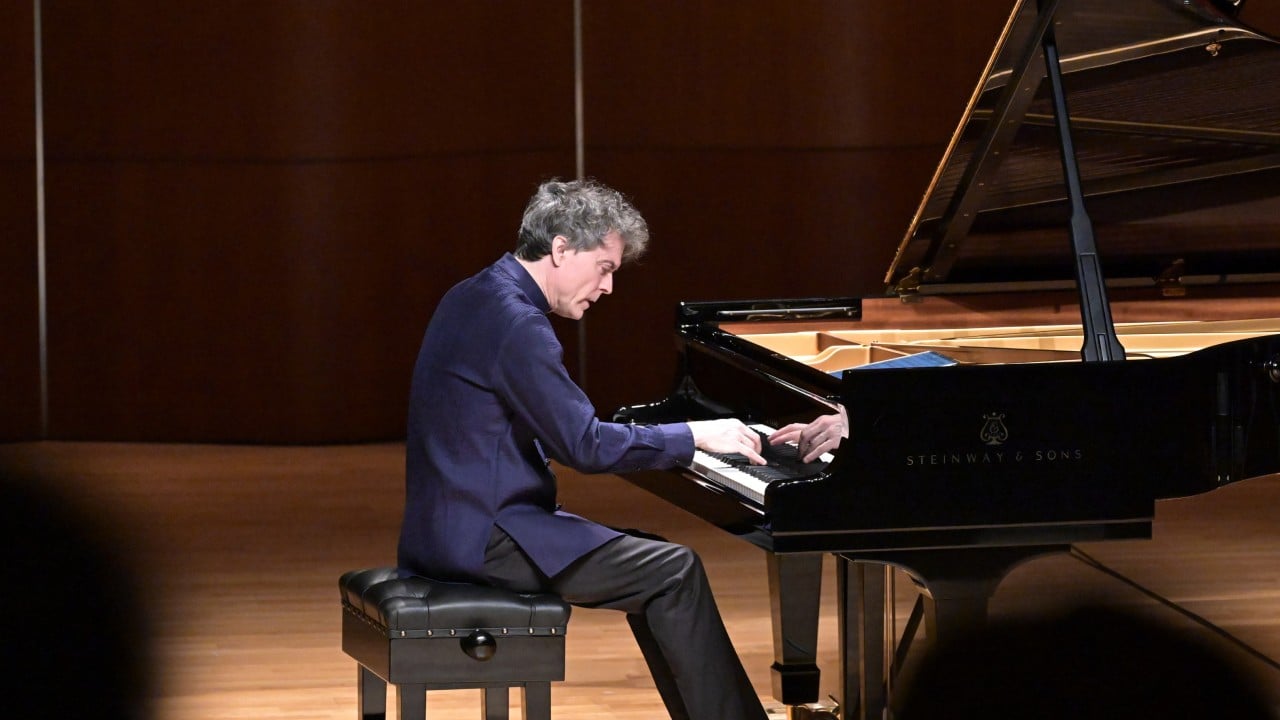
© » SOUTH CHINA MORNING POST
In Schubert recital series in Hong Kong, pianist Paul Lewis brings out the complex layering of composer’s musical ideas | South China Morning Post Advertisement Advertisement Performing arts in Hong Kong + FOLLOW Get more with my NEWS A personalised news feed of stories that matter to you Learn more Pianist Paul Lewis performs during the fourth and final part of the “Schubert’s 12 Piano Sonatas with Paul Lewis” concert series at the Grand Hall, Lee Shau Kee Lecture Centre, University of Hong Kong on January 28, 2024...

© » KADIST
Randa Maroufi
2019Randa Maroufi’s Bab Sebta , is named after a Spanish enclave in Morocco, Ceuta...

© » ARTS EQUATOR
Torch the Place: Shedding the Dead Weight | ArtsEquator Thinking and Talking about Arts and Culture in Southeast Asia Articles Jeff Busby February 27, 2020 The following review is made possible through a Critical Residency programme supported by By Nabilah Said (800 words, 5-minute read) The first thing one sees upon entering the Fairfax Studio in Arts Centre Melbourne for Torch the Place is a huge mountain covered in cloth, and an old piano...
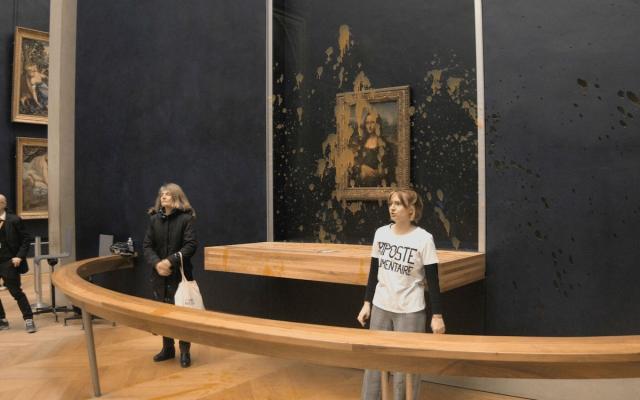
© » ART & OBJECT
Protesters Splash Soup on the Louvre's Mona Lisa | Art & Object Skip to main content Subscribe to our free e-letter! Webform Your Email Address Role Art Collector/Enthusiast Artist Art World Professional Academic Country USA Afghanistan Albania Algeria American Samoa Andorra Angola Anguilla Antarctica Antigua & Barbuda Argentina Armenia Aruba Ascension Island Australia Austria Azerbaijan Bahamas Bahrain Bangladesh Barbados Belarus Belgium Belize Benin Bermuda Bhutan Bolivia Bosnia & Herzegovina Botswana Bouvet Island Brazil British Indian Ocean Territory British Virgin Islands Brunei Bulgaria Burkina Faso Burundi Cambodia Cameroon Canada Canary Islands Cape Verde Caribbean Netherlands Cayman Islands Central African Republic Ceuta & Melilla Chad Chile China Christmas Island Clipperton Island Cocos (Keeling) Islands Colombia Comoros Congo - Brazzaville Congo - Kinshasa Cook Islands Costa Rica Croatia Cuba Curaçao Cyprus Czechia Côte d’Ivoire Denmark Diego Garcia Djibouti Dominica Dominican Republic Ecuador Egypt El Salvador Equatorial Guinea Eritrea Estonia Eswatini Ethiopia Falkland Islands Faroe Islands Fiji Finland France French Guiana French Polynesia French Southern Territories Gabon Gambia Georgia Germany Ghana Gibraltar Greece Greenland Grenada Guadeloupe Guam Guatemala Guernsey Guinea Guinea-Bissau Guyana Haiti Heard & McDonald Islands Honduras Hong Kong SAR China Hungary Iceland India Indonesia Iran Iraq Ireland Isle of Man Israel Italy Jamaica Japan Jersey Jordan Kazakhstan Kenya Kiribati Kosovo Kuwait Kyrgyzstan Laos Latvia Lebanon Lesotho Liberia Libya Liechtenstein Lithuania Luxembourg Macao SAR China Madagascar Malawi Malaysia Maldives Mali Malta Marshall Islands Martinique Mauritania Mauritius Mayotte Mexico Micronesia Moldova Monaco Mongolia Montenegro Montserrat Morocco Mozambique Myanmar (Burma) Namibia Nauru Nepal Netherlands Netherlands Antilles New Caledonia New Zealand Nicaragua Niger Nigeria Niue Norfolk Island Northern Mariana Islands North Korea North Macedonia Norway Oman Outlying Oceania Pakistan Palau Palestinian Territories Panama Papua New Guinea Paraguay Peru Philippines Pitcairn Islands Poland Portugal Puerto Rico Qatar Romania Russia Rwanda Réunion Samoa San Marino Saudi Arabia Senegal Serbia Seychelles Sierra Leone Singapore Sint Maarten Slovakia Slovenia Solomon Islands Somalia South Africa South Georgia & South Sandwich Islands South Korea South Sudan Spain Sri Lanka St...
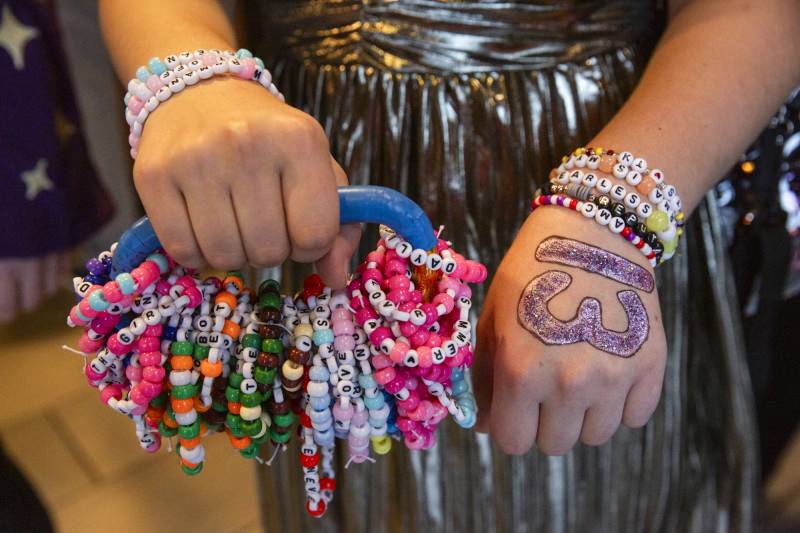
© » KQED
The Bay Area's Hottest, Weirdest, Worst and Funniest Trends of 2023 | KQED Skip to Nav Skip to Main Skip to Footer Arts & Culture The Bay Area's Hottest, Weirdest, Worst and Funniest Trends of 2023 Rae Alexandra Alan Chazaro Ugur Dursun Sarah Hotchkiss Olivia Cruz Mayeda Gabe Meline Emma Silvers Luke Tsai Nastia Voynovskaya Dec 8 Save Article Save Article Failed to save article Please try again Facebook Share-FB Twitter Share-Twitter Email Share-Email Copy Link Copy Link Elisheva Samson, 16, shows off her carabiner of friendship bracelets to trade while waiting in line for merch before seeing “Taylor Swift The Eras Tour” at AMC Kabuki in Japantown, San Francisco on Friday, Oct...
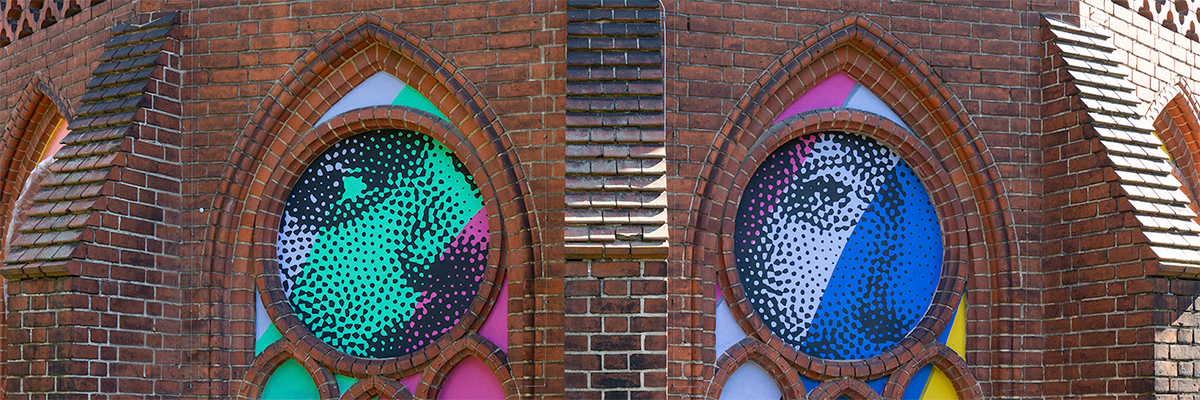
© » BROOKLYN STREET ART
Various & Gould Go to Church to Spread Colorful “Strahlen” with Project “Startbahn” | Brooklyn Street Art BROOKLYN STREET ART LOVES YOU MORE EVERY DAY In the heart of Berlin-Neukölln, the Genezareth Church , a neo-Gothic tower with a history as rich and intricate as the city itself, stands renewed and vibrant, thanks to the artistic duo Various and Gould...









